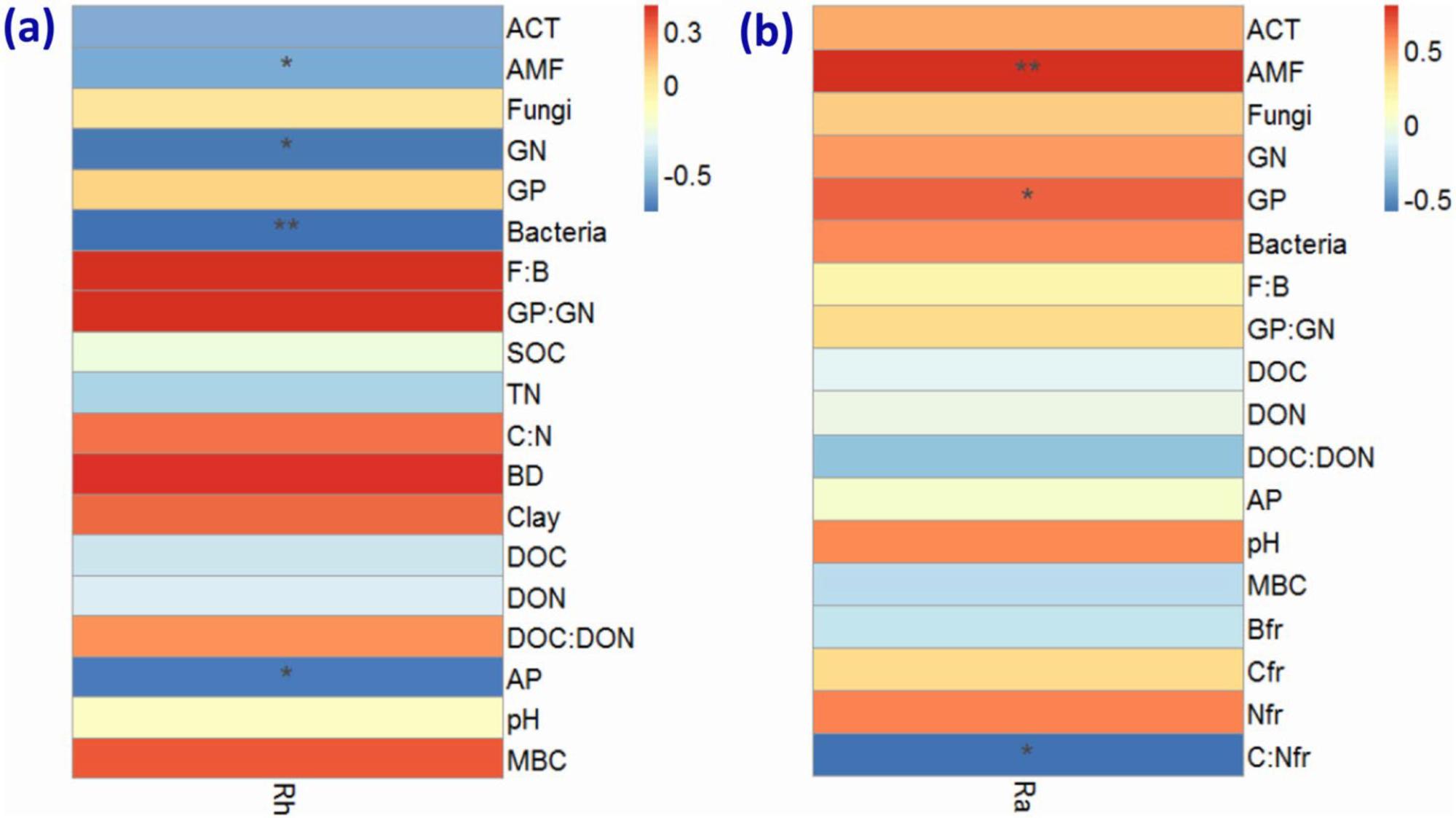Soil respiration is a major carbon loss form and crucial carbon cycling process in forests, which can be significantly impacted by land-use change and mediated by soil microbial community (SMC) structure. However, how soil respiration components (i.e., heterotrophic respiration (Rh) and autotrophic respiration (Ra)) link to SMC structure under long-term forest conversion is still unclear.
Based on a long-term forest conversion scenario in subtropical region of China, the Global Change Ecology Group at the Wuhan Botanical Garden of the Chinese Academy of Sciences examined Rh and Ra distributions using the root trenching method during the growing season, and also the SMC structures in trenched and rhizosphere soils.
The researchers found that over more than three decades after forest conversion, the Rh dynamics was significantly correlated with the SMC structure and soil temperature, whereas the Ra dynamics was significantly correlated with the SMC structure in rhizosphere soil, fine root quality and soil temperature.
The results suggest that microorganisms and the microenvironment play crucial roles in modifying the belowground carbon process over long-term forest conversion, highlighting the importance of plant community attributes and forest management for soil carbon emission and assessment on carbon sequestration potential in subtropical forests.
This work was supported by the Natural Science Foundation of China, and it was published in Journal of Soils and Sediments entitled "Differential linkages between soil respiration components and microbial community structures under long-term forest conversion."







